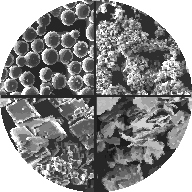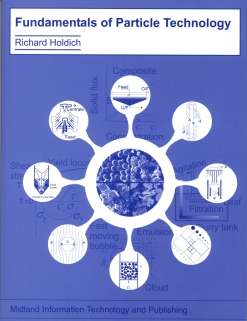Solid/solid mixing - Chapter 12
Segregation during solid mixing
This video (opens in new window) illustrates segregation (due to particle size)
during a mixing process. In the video the dark coloured finer particles visibly segregate from the white coloured larger particles.
This is an excellent example of the counter-intuitive nature of mixing, it could have been assumed that mixing for
longer will guarantee the best mixture quality. Clearly, the video demontstrates that this is not the case and, in fact,
mixing for longer causes a higher degree of particle segregation.
Segregation is a major concern during particle mixing and it is driven by any physical property of the solids that
may differ between the solids to be mixed; e.g. size, density, rotational inertia, shape...
Answers to problems at the end of Chapter 12:
Problem 2
Download the Excel spreadsheet here.
The standard deviation of the randomly mixed powder is in a red coloured cell.
The spreadsheet allows you to vary the proportions, sizes, etc. to see the effect on
mixing. Try changing component C to 5000 microns and see the graph change.
See Figure 12.5 for more information on mixing time and how to use sigmaR to
estimate this.
Problem 3
Convert these distributions to n3(x), then calculate the weight weighted mean
particle mass, see equation (2.32), use these values and the data in the question in
the above spreadsheet to determine the random between sample standard deviation. See Figure 12.3
for information on how to interpret the use of standard deviation and mixing efficiency.
FAQ
solid mixing equipment suppliers
For an up-to-date list of solid mixing equipment suppliers please use the Google link below:Google search for solid mixing suppliers

